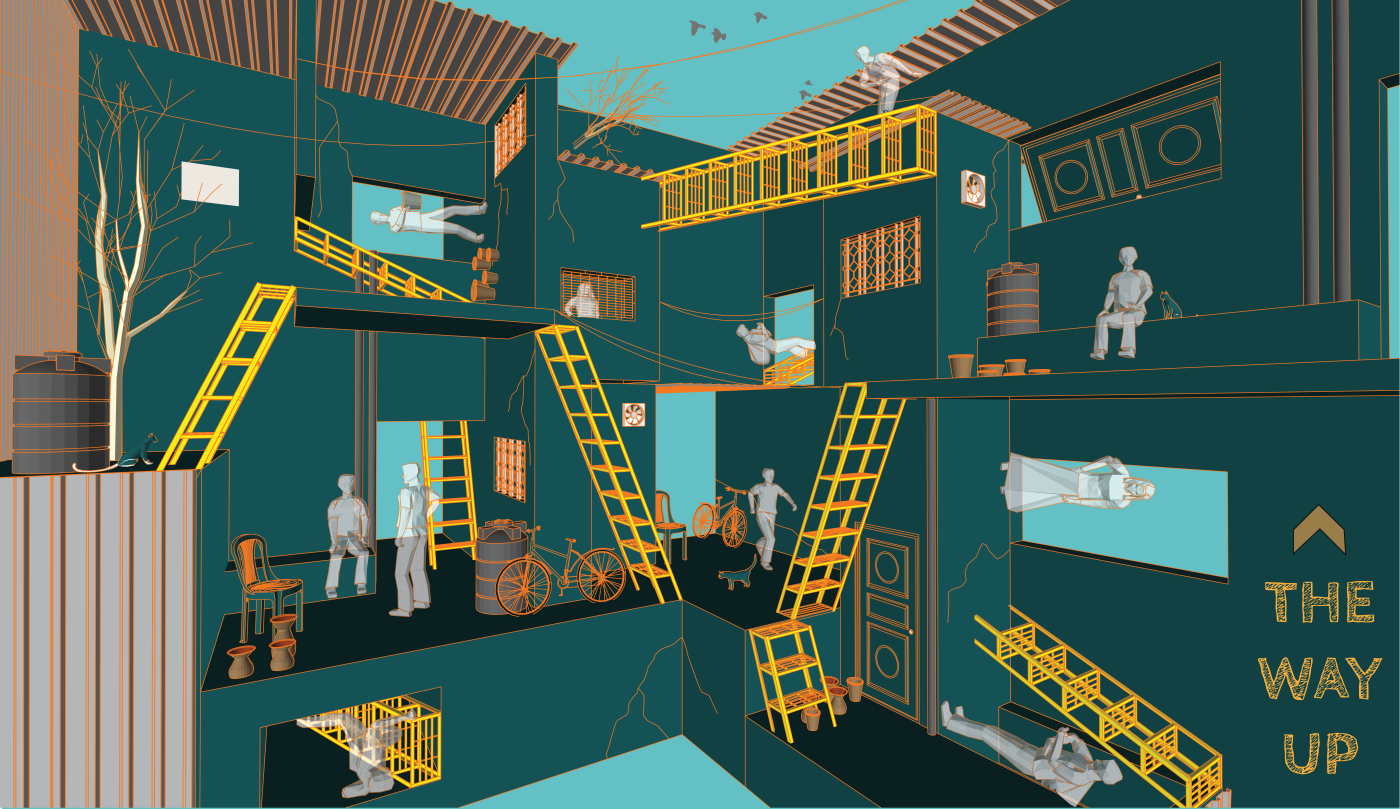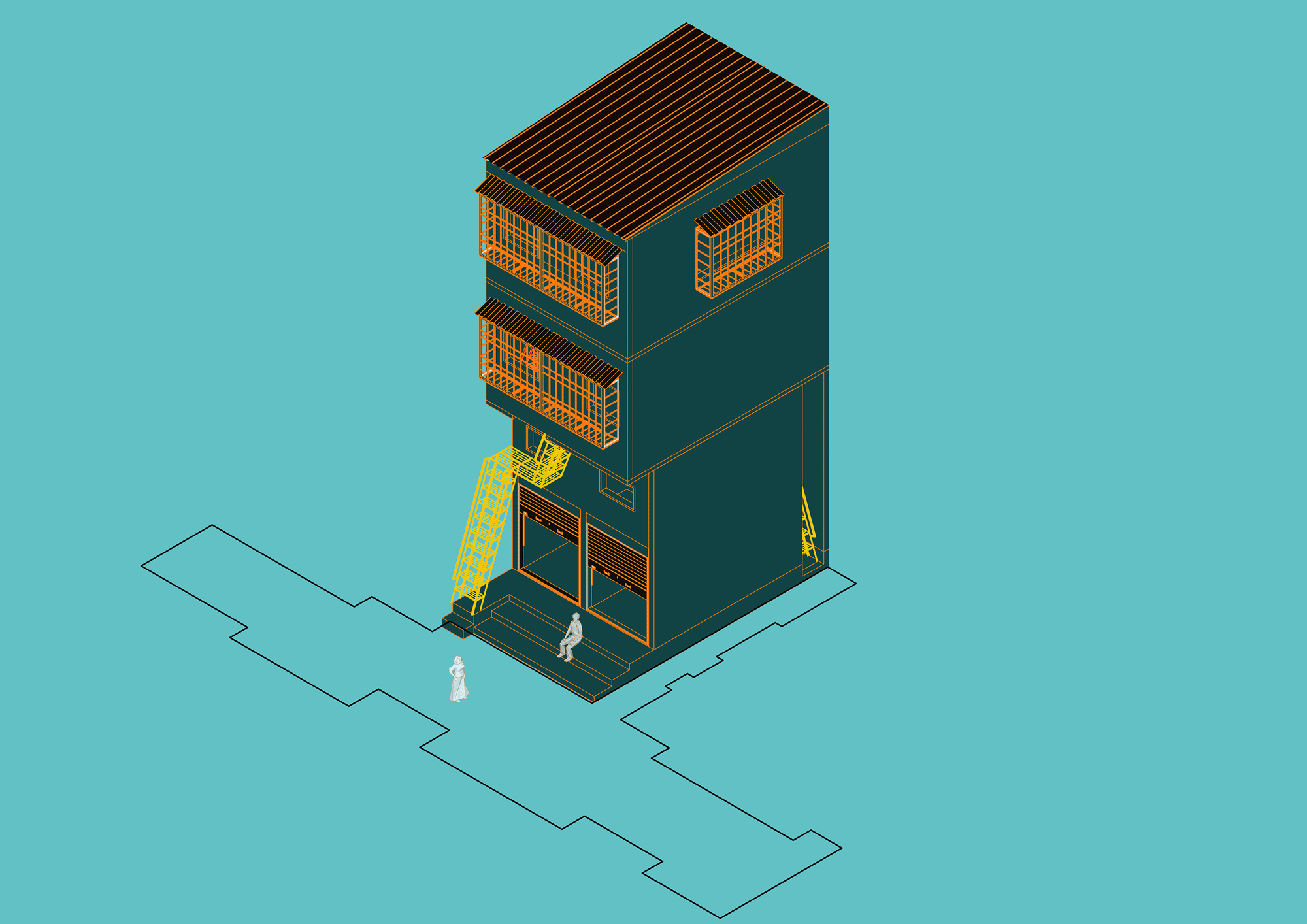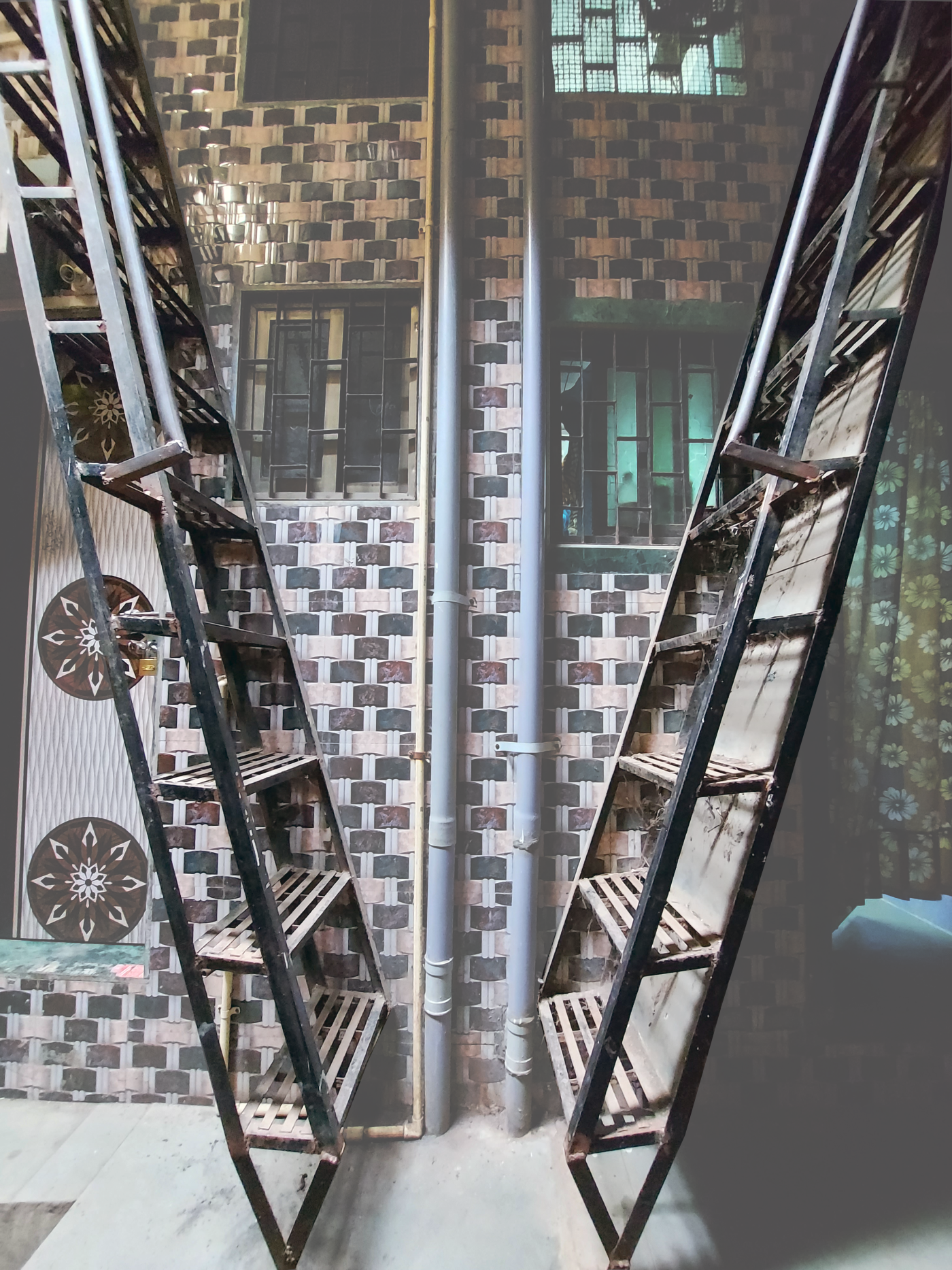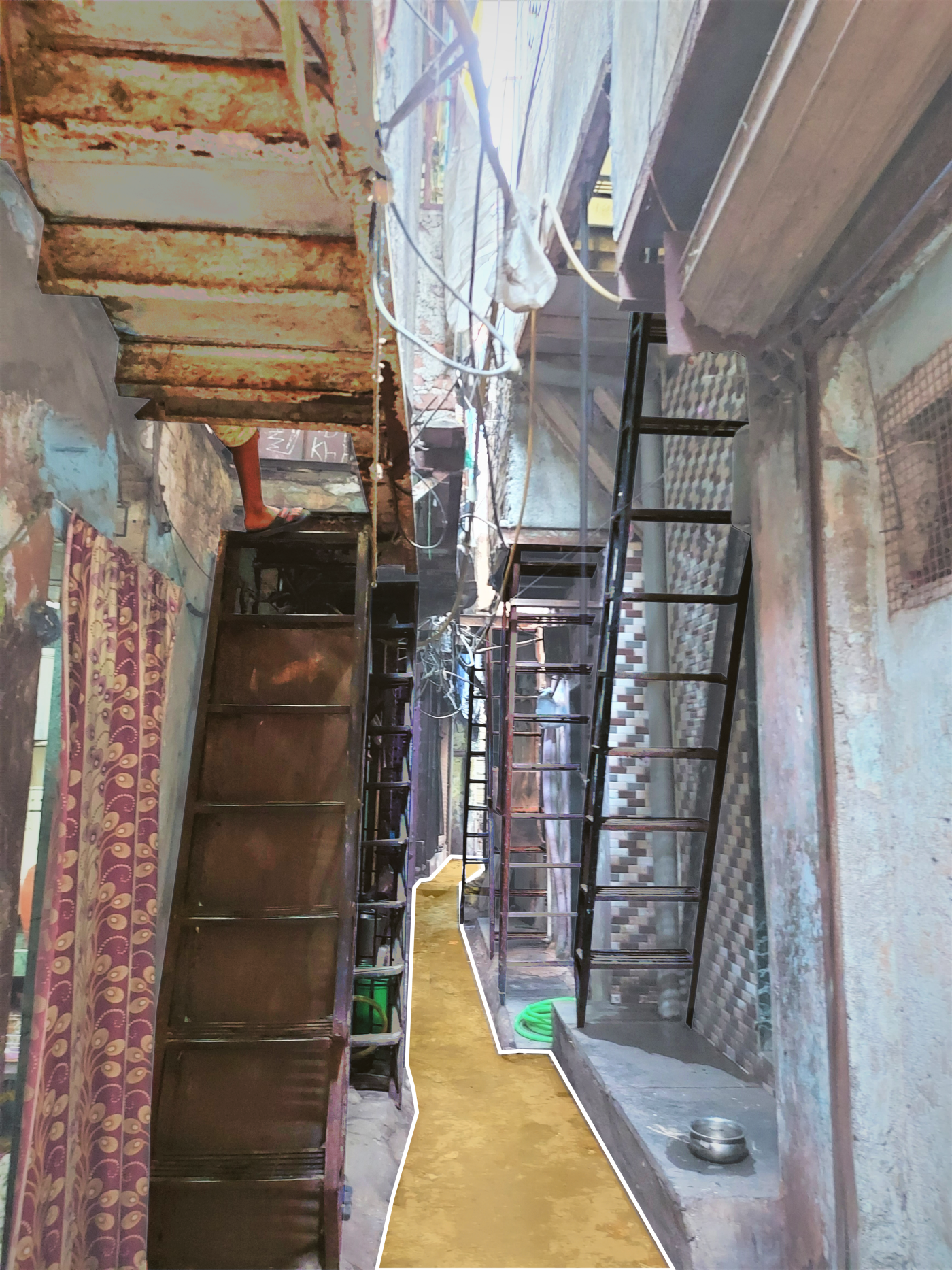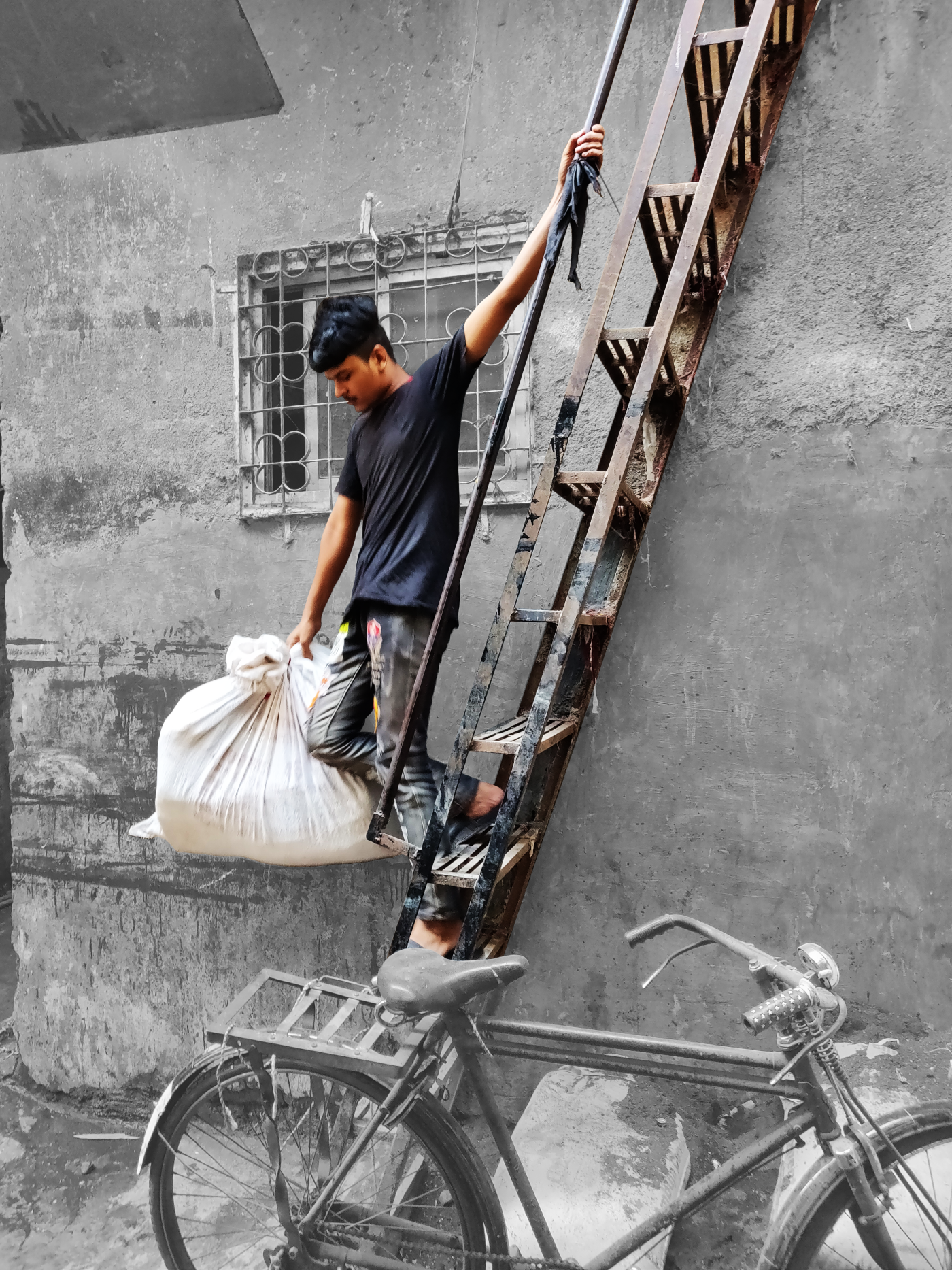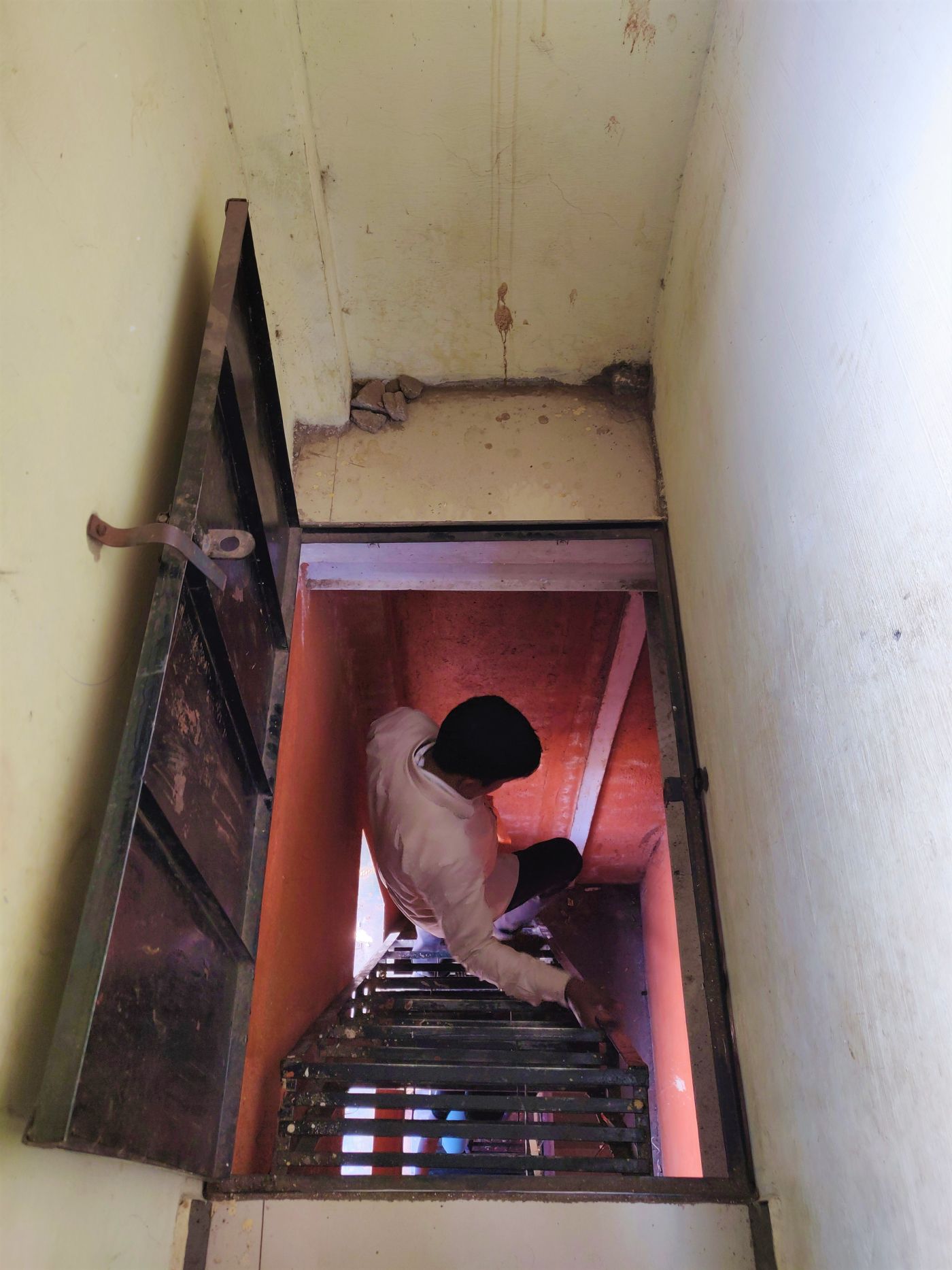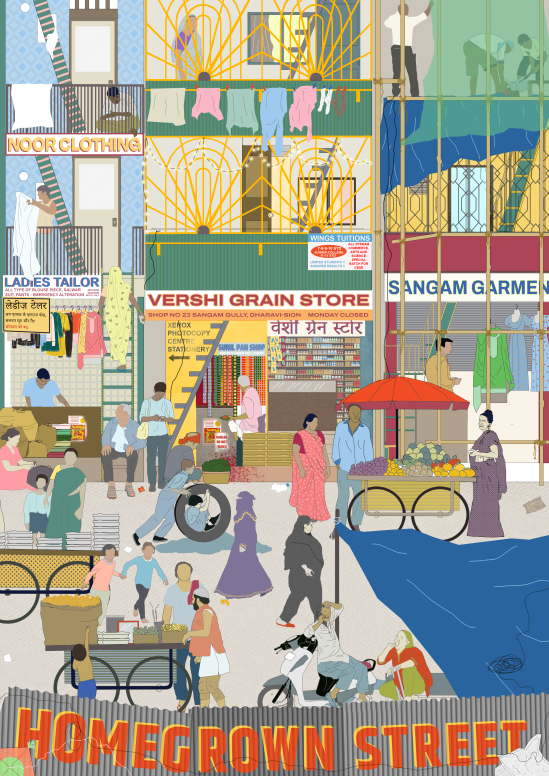The Way Up

The Way Up
A convoy of mild steel staircases dots the dynamic gullies of Dharavi. As one of the most essential Homegrown elements, these staircases are a direct indication of the vertically incremental developments in this context. Primarily installed as an ‘add-on’ for the additionally constructed storey, these staircases have become a natural part of the street to guide one to ‘the way up.’
Straight flights lead to the upper storey with a clear aim of reaching the maximum height in minimum space. Moreover, the staircase structure is primarily governed by the ability to assemble quickly, optimize space, and cost. Given that space is a commodity in Dharavi, a comfortable stride is rather a symbol of grandeur. Here, the construction of a staircase is completely ad hoc, and their positioning on the street is generally an outcome of existing references. For anyone not familiar with this context, the arrangement might seem irregular, disorganized, and sometimes even chaotic. However, for the residents, these metal structures are extremely efficient in their purpose of facilitating ongoing economically-driven activities. “Aadat ka baat hai, roz karoge to aa jayega” (It is a matter of forming a habit, if you climb every day, you will eventually get comfortable) is what is generally suggested when one struggles to make an alliance with the steepness of the stride.
The staircase acts in pure function, stripped of the conventional stone detail for the tread and an enclosed riser. Here, what remains is the skeleton of the stair bearing and baring “only the essential.” Constant trial and error with design have given rise to the “preferred” set of construction details within the community. Given the parameter of affordability, this preference solely emerges from the “purpose achieved well at a reduced cost” approach. Interestingly, this approach has contributed to evolving a new standard of design details and construction practices within the community. This “Dharavi construction manual” harbours solutions to some of the most complex problems of space management and accessibility.
Elaborating on the construction standards of the community, Mani bhai, who owns a metal fabrication workshop shares that he has been in the staircase-fabrication business for the past 30 years. Having acquired the skills of metal fabrication from his father, he has contributed to almost 70 per cent of the staircases found in and around Sangam Gully. Mani bhai demonstrates how the tread is a farma (frame) of 1-inch x 1-inch L-angles that is tied together with horizontal pattis (strips of mild steel). The simplicity of the structure allows him to fabricate a one-storeyed staircase in a day’s work. For his expertise, he would charge anywhere between Rs. 5000 to Rs. 8000 depending on the quality of material, time, and labour involved in the fabrication.
Along with fabricating, Mani bhai guides his clients on the best position for the staircase- how it should connect with the street, the slope(angle) for the stair, number of treads, cost-effectiveness, etc. In most cases, he suggests his clients go with the ”Dharavi standard” of 22-inches for the width of the tread and 1-foot for the riser (which is double the conventional standard for a comfortable riser). Moreover, he prefers not to go lower than 10 degrees for the slope of the staircase.
As a part of our study, we identified 3 Homeowners who allowed us to examine the vertical circulation within their houses. Badal bhai owns a Ground+3 storeyed building- the ground floor functions as a residence while the upper storeys are rented for commercial activities. Regardless of the space constraint, the staircase arrangement in this building efficiently serves the constant influx and efflux of raw material and finished products respectively. In a space spanning 8 feet x 5 feet for the staircase, the arrangement allows one to conveniently access the top floor.
Eijaz’s house offers two separate entries for private and rented accommodations. The access to the private residence on the first floor is from the east-end of the building. Whereas the rented apartment on the second floor has access from the primary street. A climb to the second floor showcased how the staircases make ‘entering a room’ a feature of the building plan rather than elevation. Interestingly, this feature is widely accepted and commonly adopted in similar housing typologies in the vicinity.
Agzar’s house showcases one of the best examples of a steep straight flight. The building footprint is as small as 8 feet x 6 feet. The staircase manages to achieve a height of 20 feet in a horizontal span of 8 feet.

